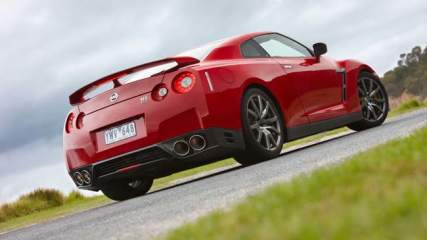Best cars as future classics 2013
By Paul Gover · 08 Apr 2013
Twenty years from now, the carscape will be vastly different. Electric cars will be commonplace, hybrids will be universal and the Aussie V8 muscle car will be a page in history.But a handful of 2013 cars will have survived the turmoil to attain classic status just as the Ford Falcon GTHO from the 1960s is considered even more desirable today than it was when it first hit the road. Classic cars are not necessarily about horsepower or price.We know a collector who loves the humble, bumbling Morris 1100 in his multi-car garage. The first Toyota Prius is a car to keep because of its place in history. The original Mazda MX-5 from 1989 is just as “classic'' as certain Porsche 911s. The key to classic status is simple: Emotion.A car does a job in the same way as a fridge but it's much more than a machine, from the shape of its bodywork to the touch-and-feel pieces in the cabin and the way it makes you feel when you're driving. The attachment could take the form of the love you feel for a first car, even a humble '50s Beetle, or the satisfaction of finally parking a dream machine -- even a Leyland P76 -- in the garage.Classic cars don't have to be affordable on day one, because depreciation hits everything. Not enough, perhaps, to make the LaFerrari more than a dream but it could help with a Porsche 911 or an Audi R8 that's definitely desirable despite the showroom sticker.Which current cars will achieve classic status? If we really knew, the Carsguide crew would be putting them up on blocks today as investments for the future. But here are some likely suspects:Abarth 695 TributoPrice: from $69,990Engine: 1.4-litre 4-cylinder, 132kW/230NmTransmission: 5-speed sequential auto, FWDThirst: 6.5L/100Km, CO2 151g/kmThe Italian baby is outrageously expensive but this humble Fiat 500 has been touched with the Ferrari wand, which makes it special. It looks wicked and is a hoot to drive. Just plain fun.Holden Commodore SS-VPrice: about $50,000Engine: 6.0-litre 8-cylinder, 270kW/ 530NmTransmission: 6-speed manual or auto, RWDThirst: 12.2L/100Km, CO2 288g/kmThe last in the long line of truly home grown Holdens will soon be one to enjoy, thanks to improved efficiency and an Audi-style luxury cabin. The SS-V and HSV's coming F Series cars will be historic and performance icons.Range Rover EvoquePrice: from $51,495Engine: 2.2-litre 4-cylinder, 110kW/380NmTransmission: 6-speed manual or auto, FWD or 4WDThirst: 4.9L/100Km, CO2 129g/kmThis one is a fashion item, not an SUV. The Evoque is all about the looks, a lot like a Mini, but it is also a great drive and we know the all-paw drive examples will go almost anywhere.Nissan GT-RPrice: from $172,000Engine: 3.8-litre 6-cylinder, 404kW/628NmTransmission: 6-speed auto, 4WDThirst: 11.7L/100Km, CO2 278g/kmGodzilla is already a collector's car, thanks to earlier models tied to the GT-R that won the Bathurst 1000. The new model is a better car, and still great value, but collectors will need to find one that hasn't been battered and abused.Volkswagen Golf GTIPrice: from $40,490Engine: 2.0-litre 4-cylinder, 155kW/280NmTransmission: 6-speed manual or auto, FWDThirst: 7.7L/100Km, CO2 180g/kmThe German pocket rocket is a top drive and the coming model, using the Golf Mk7 body, promises to be even better. The GTI has been a cult car since the '70s and truly great since the 2005 Mark 5.Subaru BRZ/Toyota 86Price: from $37,150/$29,990Engine: 2.0-litre 4-cylinder, 147kW/205NmTransmission: 6-speed manual or auto, RWDThirst: 7.8L/100Km, CO2 181g/kmPeople who love cars have fallen for the Twins, the sports cars that won Carsguide's 2012 Car of the Year. There is a waiting list for both and the keen are paying more than the showroom sticker, because they deliver exactly what they promise at a great price. Pushed, we'd go for the BRZ in Subaru's signature blue.
wide.jpg)








